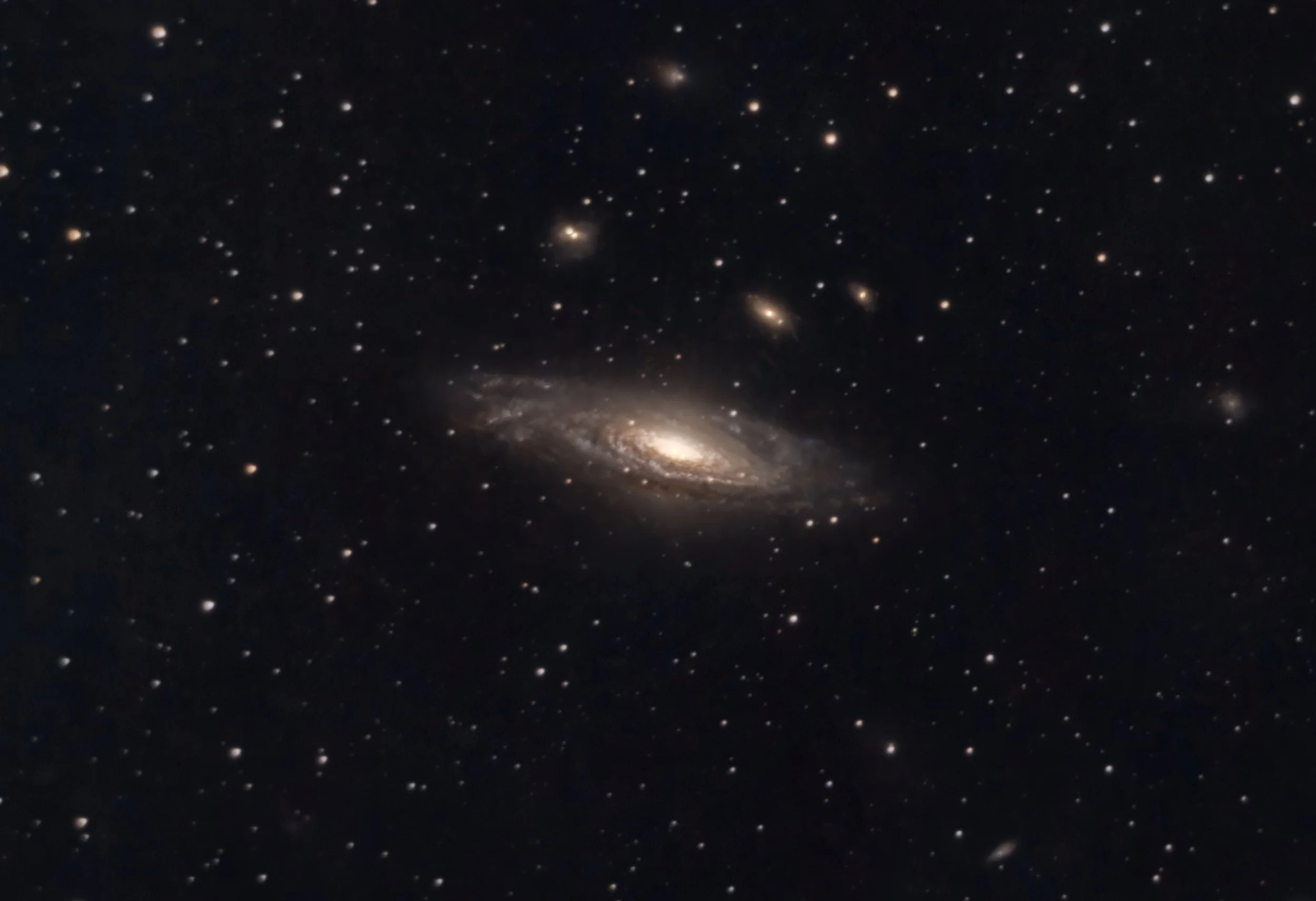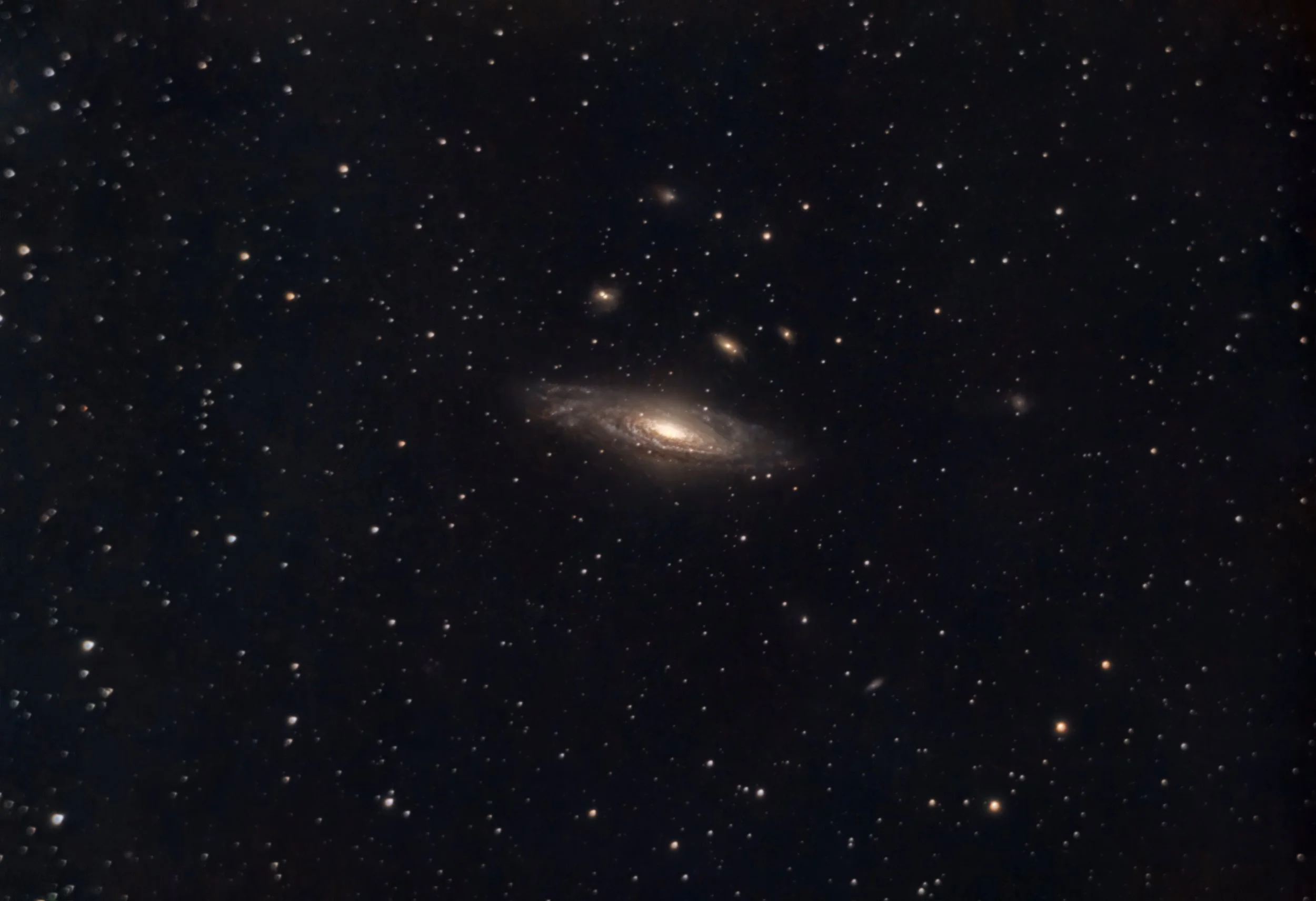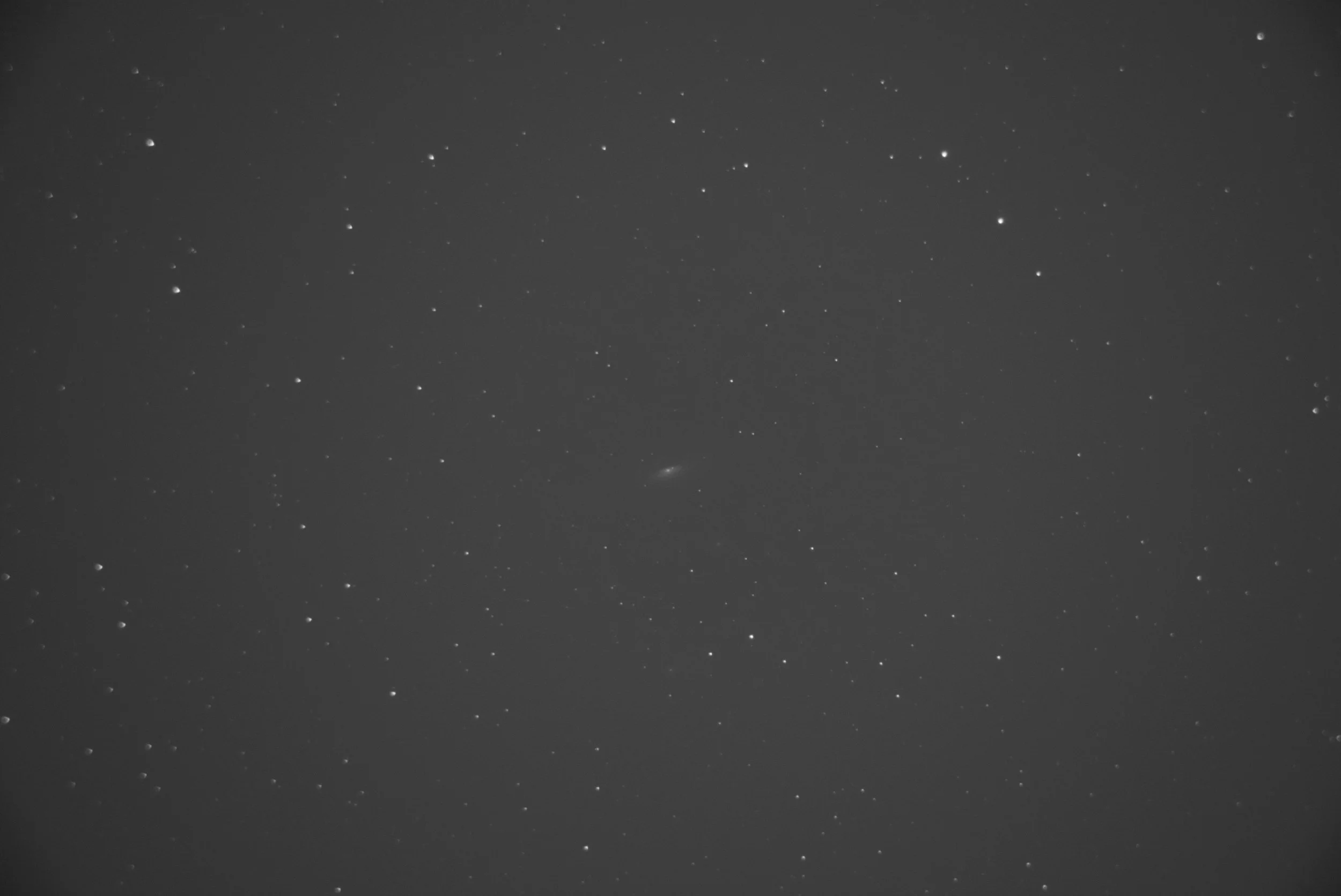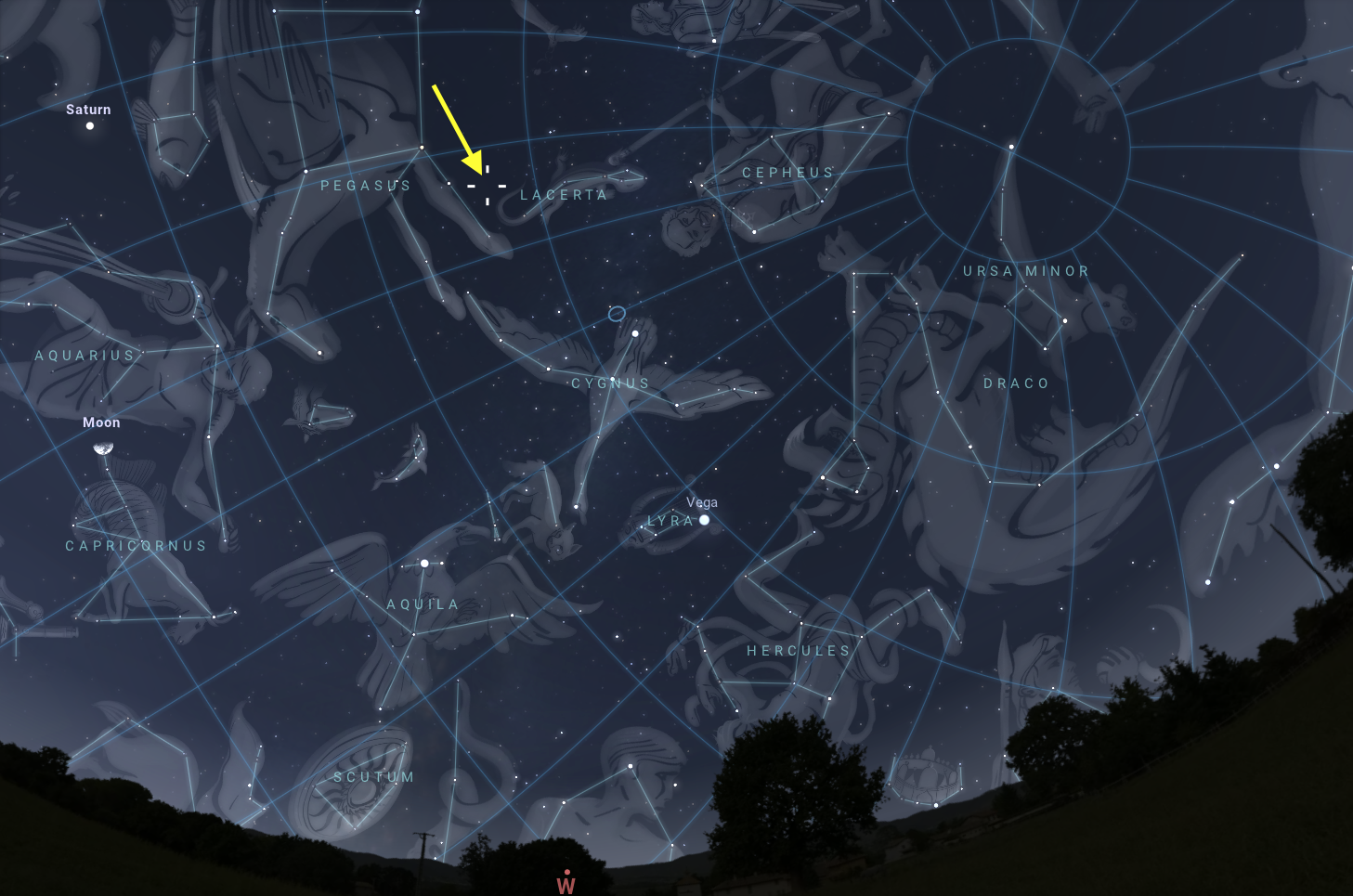NGC 7331 - Spiral Galxy in Pegasus
Type: Unbarred Spiral Galaxy
Discoverer: William Herschel, 1784
Size: 146,000 ly
Distance: 44 Mly
Age: 9-14 Billion Years
Constellation: Pegasus
Other Names: Caldwell 30
My Notes:
Captured on the night of September 5–6 from 21:57 to 01:04 in Northern Lincoln, Nebraska. I collected 90 2-minute subs (10,800 seconds total) while testing the ASIAIR Live setting that auto-stacked with its own darks, flats, and bias stacked frames, so I didn’t have separate calibration files later in Siril when I processed this. The “final” image created by the ASIAIR was unacceptable.
This was taken with my Celestron NexStar 6SE at f/10 (1500 mm) and a ZWO ASI2600MC controlled by ASIAIR, no filters. After the session, when reviewing the subs I noticed the stars blurred and stretched the closer they got to the edge of my image. I initially suspected collimation issues, but a check confirmed the scope was aligned; the problem was that the conversion tube between the telescope and camera was too narrow for the sensor, which produced pronounced coma star distortion. I decided to process the data anyway since this was my first try at using the new camera and ASIAir. I used the following software: Siril → GraXpert → Siril → Topaz Photo → Photoshop → Siril. The arms show some detail, but the amount of background noise was hard to edit around.
A historical note: NGC 7331 was discovered by William Herschel in 1784. Originally cited as a Milky Way analog in terms of size and structure, recent discoveries have revealed that the Milky Way is a Barred Spiral, whereas this galaxy is unbarred. The faint edge-on companion galaxies in the field are popularly nicknamed the “Deer Lick Group,” a moniker popularized by amateur astronomer Tomm Lorenzin after Deer Lick Gap in North Carolina.
NGC 7331 – Spiral Galaxy in Pegasus. Edited in Siril, GraXpert, Photoshop, and Topaz Photo. 90 frames at 120 sec (10,800 sec total) f/10 1500 mm – Celestron NexStar 6SE & ZWO ASI2600MC Air (2024/09/05 – 06)
Wider FOV of NGC 6946. You can see the coma in the stars near the edge of the image.
One of the 120 second subs. These are what get stacked to form the final image.
The location of NGC 7331 in the sky from Lincoln, NE. Image Credit: Stellarium



